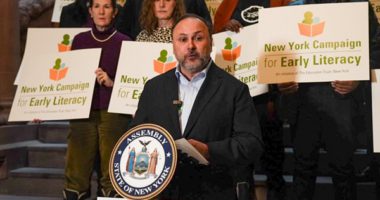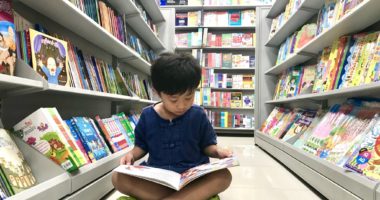Rigor and Representation in Children’s Books Foster a Love of Reading
Like millions of adults of a certain age, my reading journey began with libraries and public television. One standout show was Reading Rainbow, where the host, Levar Burton, would read a book aloud, then and make the topic of that book come to life through on-location segments, additional stories, and book reviews by children. The show was a literacy project, in response to a national concern over educational fundamentals, that intentionally highlighted diversely representative texts. Representation was especially important to Burton, who, as a Black man, was inspired to become an actor after actress Nichelle Nichols became the first African American in a lead television role in Star Trek (a franchise in which he would eventually star). As such, Reading Rainbow centered diverse representation and a love for reading as a way of addressing literacy forty years ago — and these transformative approaches are as relevant now as we approach the literacy crisis of today.
Alarm bells have been ringing especially loud in recent years about the woeful state of reading in the United States, as reading tests have shown large drops in overall performance and disproportionate impacts from the pandemic on literacy rates, especially for students of color, students with disabilities, English learners, and students from low-income backgrounds. An encouraging movement has risen to respond to these alarm bells as states across the country adopt large-scale reforms, including the replacement of curricula and the addition of professional development requirements related to the science of reading.
Simultaneously, another movement has emerged to counter book bans and censorship legislation that have created disarray across the nation’s classrooms and libraries. These restrictive pieces of legislation have resulted in severely limited access to books for many children. Restrictions are worsened by a phenomenon of soft censorship — whereby the fear of consequences is so great and the details of the restrictions are so ambiguous, that many teachers have stopped assigning certain books and having discussions altogether. The stories that are frequently targeted by censors are those with characters of color and characters with LGBTQ+ identities, leaving many concerned about the potential consequences for the reading skill development of students of color and LGBTQ+ youth.
Although these two movements that center reading are occurring at the same time, the conversations about them are mostly siloed from one another. Policymakers and advocates must see how the movement to grant every student rigorous literacy instruction and the movement to ensure students have access to culturally relevant and honest materials and instruction depend on one another to allow children the right to read. Pairing rigor and relevance is essential to student learning.
For one, students are more engaged when they see people like themselves in school materials, and that increased engagement from representation leads to improved learning outcomes. In the push to reform state and district programs, policymakers and advocates cannot overlook the power of engaging students in approaches and materials that let them make connections to their learning. A push for relevance is also necessary for one of the evidence-based components of the science of reading that is often given less attention — reading comprehension. A key ingredient in the Reading Rainbow formula was connecting a wide array of book topics, that might have been very new to many viewers, to real world locations, people, and experiences. By recognizing students’ cultural knowledge and the experiences students bring with them to school, teachers are better able to build on what students already know to find the best ways to introduce new topics and vocabulary.
Additionally, rigor and relevance both require the centering of the individual student. One lesson made evident in Emily Hanford’s podcast, Sold a Story, is that biases and assumptions about what groups of students need have resulted in unequal approaches and expectations, particularly for students of color and students from low-income backgrounds. Ensuring approaches have a base in evidence is key, but so too is ensuring that instruction is informed by a student’s particular reading needs. This includes the kind of challenge that best sets that student up for growth, which is made possible when students can be engaged through materials that are relevant to them as individuals and that create opportunities for exploring new worlds. A push for rigor that does not also take into consideration what is relevant to the individual student is a push that overlooks a powerful tool in addressing a longstanding civil rights issue.
Reading Rainbow was powerful because it was about so much more than the act of reading. It was about the right to read, certainly, but it was also about fostering a love of reading — something that Burton still advocates for even to this day. Students who don’t see themselves in what they read or through their instruction — or worse, who encounter all-too-common stereotypes and negative representations — might feel discouraged to develop a love for reading. That’s why advocating for better methods of literacy instruction must include advocating for the kind of representational balance that allows all students to see themselves, to see others, and to gain the kind of love for reading that makes them independent explorers of the worlds made possible through books.






